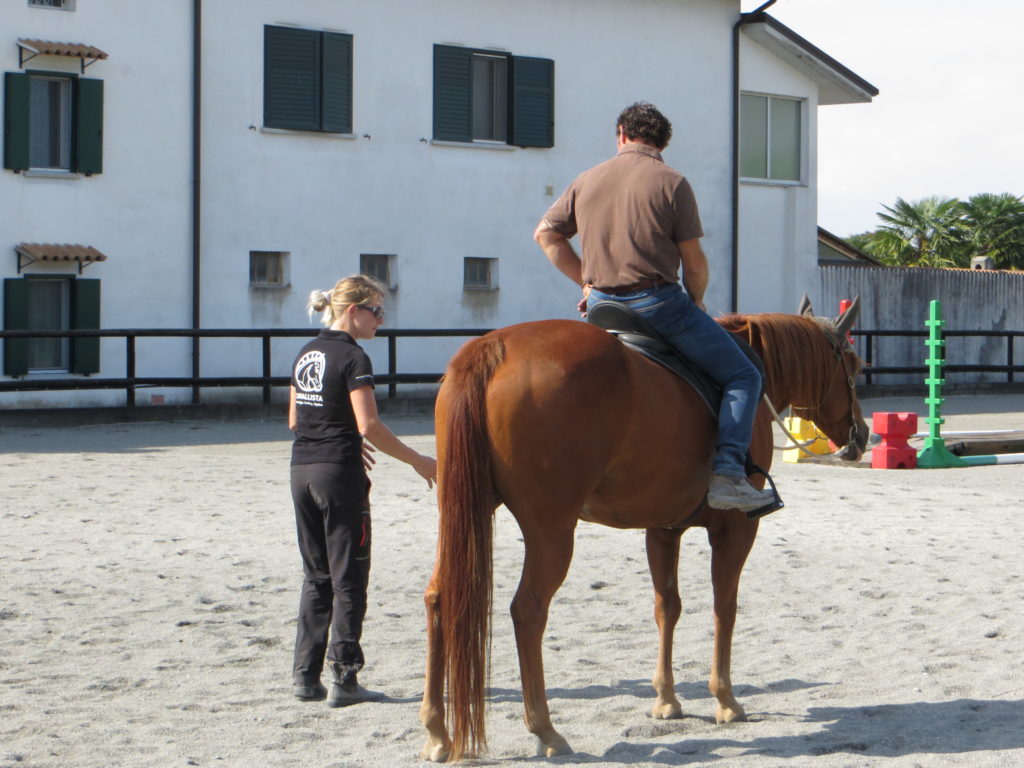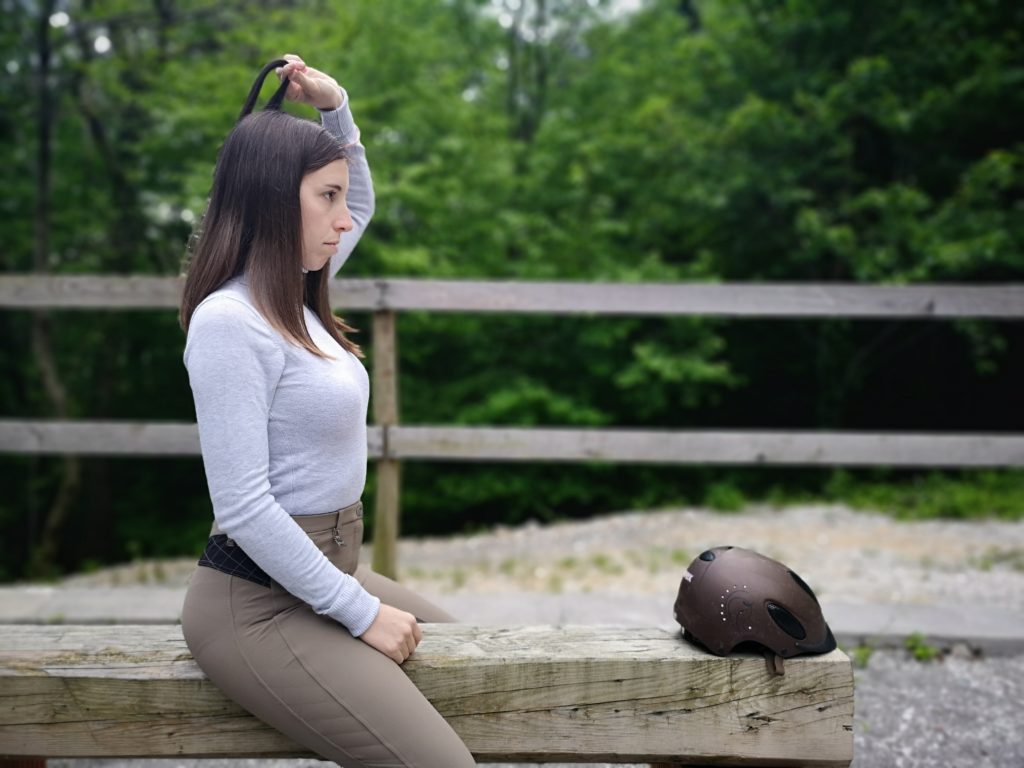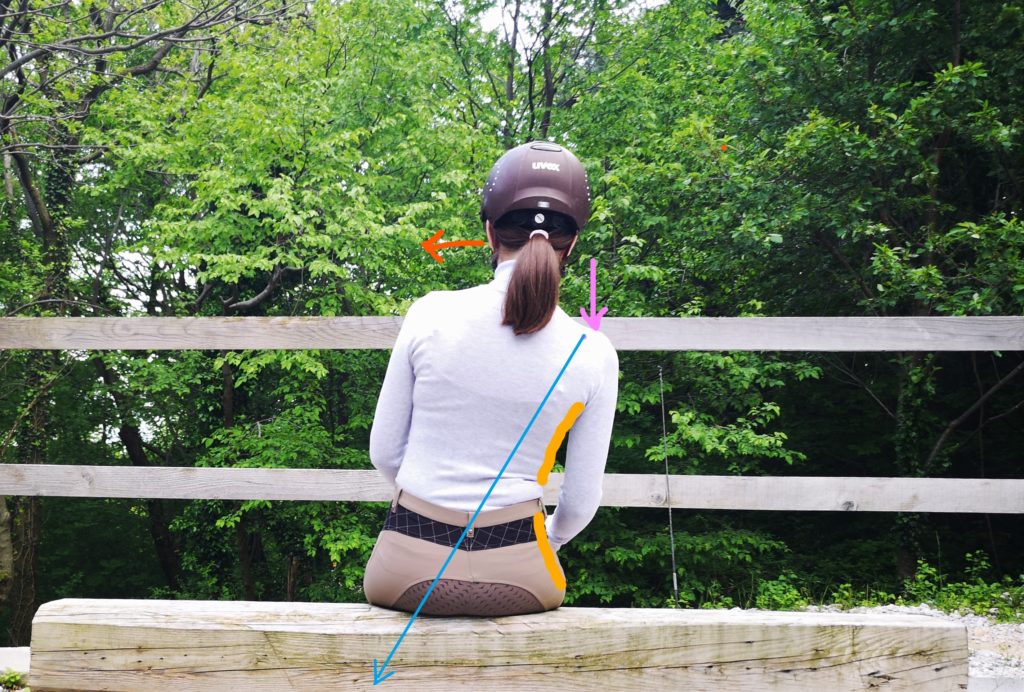CORRECT POSTURE OF THE HORSE RIDER’S UPPER BODY – PART 1 BY ALJA KISILAK
The correct posture of the rider’s upper body is key for a balanced seat and clear communication with the horse. Beginner riders often struggle with maintaining good posture when they have to move with the horse and give him direction during turns, changing rein and the like. When we reach a higher skill level we can use our posture and minor adjustments to our body position to change speed, tempo, gait, the horse’s posture and even his emotional state.
Horses are very sensitive to the slightest changes in our voice, body, weight and even our muscle tone and breathing. We can use this to easily teach him for example to change direction simply by adjusting our body. We can also teach him to slow down or even stop simply by exhaling with intention. Can you imagine how nice it can feel when the reins are there simply as a backup, while your thought and turning of your gaze can be enough to invite your horse into a turn?

A STRAIGHT UPPER BODY IS THE BASIS FOR A BALANCED SEAT
The upper part of the rider’s body uses the least amount of energy and strength when the rest of the body (the pelvis, stomach, chest, head and neck) are aligned with one another. The important thing is that we don’t maintain a straight posture with muscular effort and stiffness, as this will negatively impact both your and your horse’s posture and lightness. We can practice good posture on the ground while doing everyday things, like sitting, driving and exercising and on the lunge line under the watchful eye of a good riding instructor.

TRANSFERRING WEIGHT CAN BE TRICKY
If we want to guide the horse with our seat, we need to learn how to transfer weight correctly. The initial stage of weight transfer takes place in the rider’s torso and centre. The seemingly simple act of transferring your weight can often lead to miscommunication. Very often we see an incorrect posture of the head (along with our gaze shifted in the wrong direction) and breaking at the waist. Breaking at the waist will often happen when we try to change direction. Instead of putting extra weight on the seat bone on the side to which we want to turn, we break at the waist and lower our shoulder on the same side. This causes our pelvis and lower back to shift away from the direction in which we want to turn. This is very confusing for the horse, which makes us use stronger aids with our legs, our reins and making our shoulders compensate for everything that’s going on, adding to the confusion. It is vital to keep a straight torso while transferring weight. The pressure must change mostly in the base of our seat. Keep in mind an image of a bowling pin, grazed by the ball, rocking slightly left and right, without bending throughout his length.

A SIMPLE EXERCISE TO STOP YOU BREAKING AT THE WAIST
During warm up at the walk (or rising trot), hold both reins in the hand on the side where you don’t have a problem with breaking at the waist. For example, if you tend to break at the waist when turning to the right, hold the reins in your left hand. Extend the arm on the side where you tend to break (in our case, right) straight up. The palm should face straight ahead in the direction of travel. Start the movement in your shoulder blade, but make sure you don’t lift the shoulder up. The arm should be straight, but allow minimal, elastic movement along all the joints. Regardless of the movement, the arm should always be above the body, parallel to the head. This can help you maintain a straight body during turns and prevent breaking at the waist.
ABOUT ALJA KISILAK
Alja is a riding instructor, passionate about bringing out the best in the horse and the rider and making the experience fun for both of them. In 2008 she graduated from the Biotechnical University of Ljubljana with a thesis on Equine Psychology. Her wide knowledge on the learning theory, coupled with strong intuition and feel enables her to combine the science and art of riding into a coherent whole. She is constantly on the lookout for new knowledge and experiences and this search has led her all over Europe, where she learned from some of the best trainers of classical dressage. In addition to her work with horses, she has a gift for working with people too. She worked as a main trainer, equine assisted psychotherapy facilitator and riding instructor at MKZ Rakitna, Grad Prestranek and Cavallista riding school. Her unique skill set enables her to understand the horse’s and the rider’s perspective and their individual needs, which is the perfect combination for training that is tailored to both horse and rider.
Everyone signed up to the Equitopia membership program may also view the second part of this post at: this link
If you found this post interesting, you may also like:
Blog post: https://www.equitopiacenter.com/training-plan/
Online course: https://www.equitopiacenter.com/shop/how-to-recognize-the-24-behaviors-indicating-pain-in-the-ridden-horse-dr-sue-dyson/
Balancing the rider video: https://www.equitopiacenter.com/videos/balancing-the-rider-coordinating-body-mind-and-movement/





